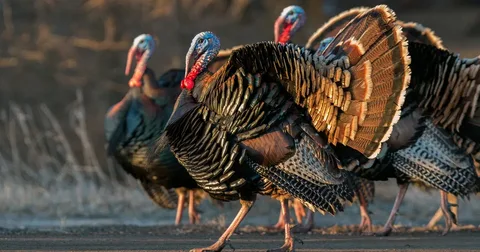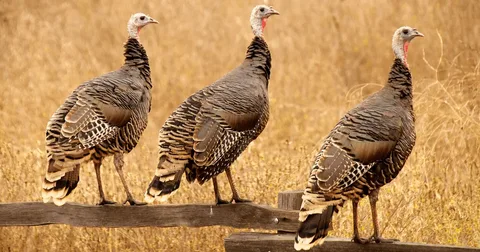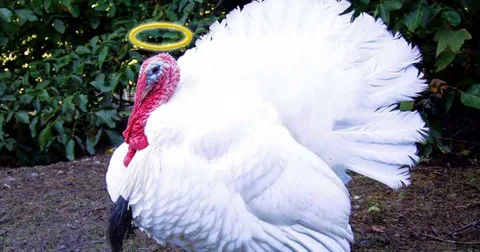The Graceful Turkey: A Bird of Beauty and Tradition
1. Introduction to Turkey Birds

The turkey Birds is one of the most fascinating and recognizable birds in the world. Known for its broad fan-shaped tail, bare wattled neck, and strong presence, the turkey is a true symbol of nature’s diversity. Native to North America, turkey Birds belong to the genus Meleagris and are closely related to pheasants and chickens. These birds are not only admired for their appearance but also hold deep cultural, historical, and ecological significance. Turkeys can be found in forests, grasslands, and farms, where they play an important role in maintaining ecological balance and supporting biodiversity.
2. Physical Characteristics and Behavior

Turkeys are large ground-dwelling birds with impressive size and striking features. Male turkeys, also known as “toms” or “gobblers,” are typically larger than females, called “hens.” The most distinctive feature of the male turkey is its magnificent tail fan, which it spreads during courtship displays. In addition, males possess a fleshy growth called a “snood” that hangs over the beak and a red-colored “wattle” on the neck, both of which play roles in attracting mates.
Turkeys are primarily omnivores, feeding on seeds, berries, insects, and small reptiles. They are skilled foragers, often scratching the ground with their strong legs to uncover food. Despite their size, turkeys can fly short distances at surprising speeds and are excellent runners. They also have keen eyesight and a sharp sense of hearing, which help them avoid predators in the wild. Social in nature, turkeys often move in flocks, creating a system of protection and cooperation within their groups.
3. Cultural and Historical Significance
Turkeys have long held symbolic importance, especially in North America. Indigenous peoples respected turkeys for their feathers, meat, and spiritual significance. Turkey feathers were often used in ceremonial attire, while the bird itself represented abundance and fertility. When European settlers arrived in the Americas, they quickly recognized the turkey’s value as a food source.
Perhaps the most famous cultural association with turkeys is their role in Thanksgiving, a holiday celebrated primarily in the United States. Turkeys became a centerpiece of the traditional Thanksgiving meal, symbolizing gratitude and prosperity. Beyond food, the turkey has been immortalized in American history—Benjamin Franklin even admired the bird so much that he suggested it would be a more fitting national symbol than the bald eagle. Today, turkeys continue to represent tradition, festivity, and heritage.
4. Importance in Modern Times

In modern society, turkeys play both economic and ecological roles. They are widely farmed for their meat, which is consumed globally and considered a lean source of protein. Turkey farming has become a major agricultural industry, especially in the United States. At the same time, conservation efforts have ensured that wild turkey populations remain stable after facing declines in the past due to overhunting and habitat loss. Wildlife management programs and hunting regulations have helped restore healthy numbers of turkeys across North America.
Ecologically, turkeys contribute to the natural environment by dispersing seeds and controlling insect populations through their feeding habits. They are also prey for larger predators, making them an important part of the food chain. As wild turkeys thrive in diverse habitats, they demonstrate adaptability and resilience, qualities that reflect the enduring spirit of this remarkable bird.
Conclusion
The turkey bird is far more than just a symbol of holiday feasts. With its striking physical appearance, cultural importance, and ecological value, the turkey deserves admiration and respect. From the forests where wild turkeys roam to the farms where domesticated ones are raised, these birds remind us of the interconnectedness of nature, culture, and history. Majestic, resourceful, and deeply significant, turkeys continue to capture the attention and appreciation of people across the world.
 Birds Drawing Birds Drawing
Birds Drawing Birds Drawing
